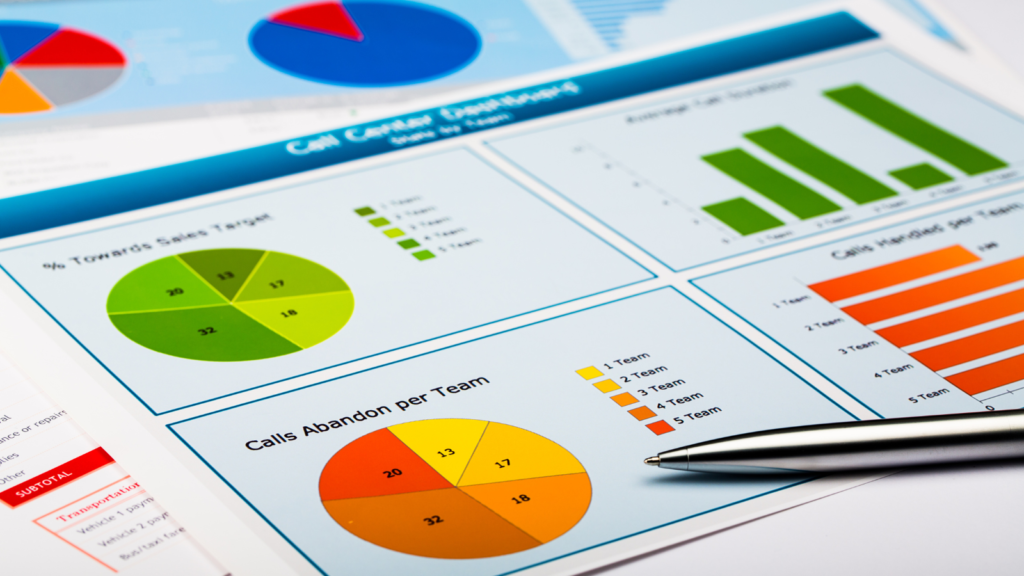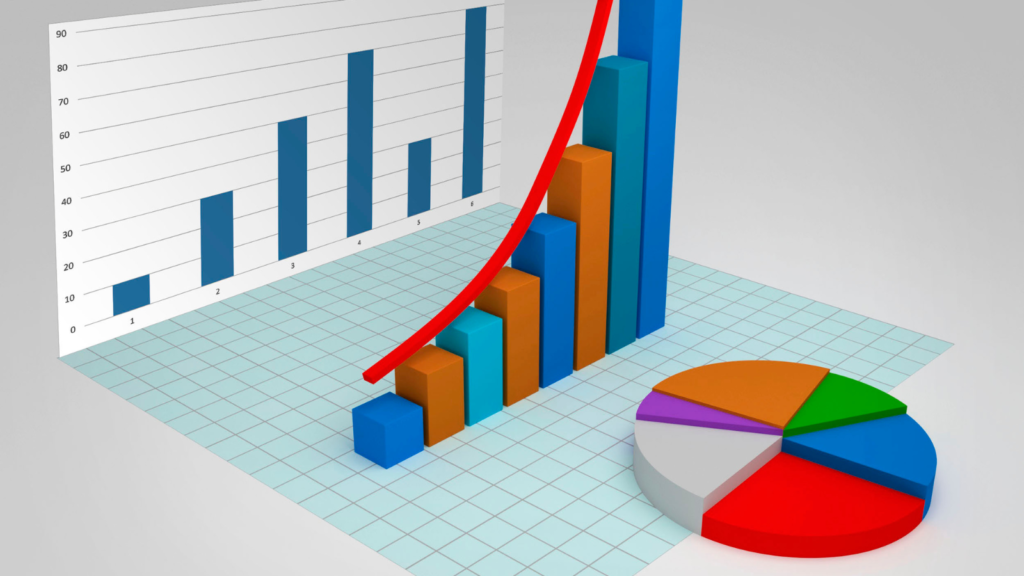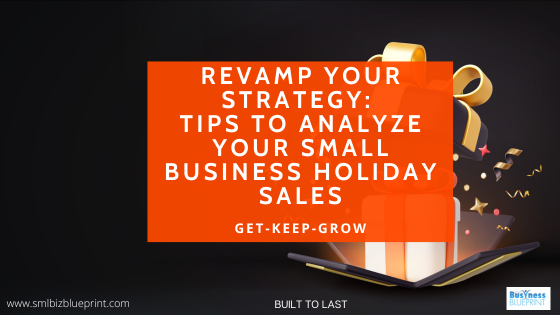In the dynamic world of small business, the post-holiday season offers a goldmine of insights.
Analysing your holiday campaign performance isn’t just about numbers; it’s about shaping the future of your business.
You lay the groundwork for a more profitable, customer-centric approach in the upcoming seasons by understanding what worked, what didn’t, and why.

Set Your Analysis Objectives
Begin your analysis with clarity.
Define what you intend to analyse—sales, customer engagement, or marketing effectiveness—and why. This clarity will direct your efforts and ensure you extract actionable insights, not just data.
Tips
Identify key performance indicators (KPIs) relevant to your business goals, such as customer acquisition cost, average order value, or conversion rate.
Conduct a SWOT analysis (Strengths, Weaknesses, Opportunities, Threats) post-campaign to align your objectives with broader business strategies.
Use customer journey mapping to understand and define customer experience and satisfaction objectives.
Data Collection
Collect various data: sales figures, website traffic, customer feedback, and social media metrics. These offer a 360-degree view of your campaign’s impact.
Remember, the more comprehensive your data, the more accurate your analysis.
Tips
Utilise tools like Google Analytics for web data and POS systems for in-store sales data to gather comprehensive information.
Conduct customer surveys post-purchase to gather qualitative data on customer satisfaction and preferences.
Track social media metrics to understand customer engagement and reach.
Sales Performance
Sales data offers a direct reflection of your campaign’s success.
Assess not just the total sales but also the trends: Which products were hits? What times did customers prefer to shop?
This information is a roadmap for future inventory and marketing strategies.
Tips
Compare sales data against set targets and historical data to identify trends and anomalies.
Analyse product-wise performance to understand which items were more popular and why.
Examine the impact of discounts or promotions on overall sales and whether they increased basket size or attracted new customers.
Marketing Strategy
Evaluate the ROI of your marketing initiatives. Did your social media ads bring in traffic? How effective were your email campaigns?
This analysis will help refine your marketing mix and allocation of resources.
Tips
Assess the click-through and conversion rates of digital ads to gauge their effectiveness.
Evaluate the open and response rates of email campaigns to understand customer engagement.
Monitor customer responses and engagement on social media campaigns to assess reach and brand impact.

Customer Insights
Your customers’ behaviour and feedback are invaluable. Understanding their preferences and pain points can guide product development and customer service improvements, making your business more responsive and competitive.
Tips
Analyse customer reviews and feedback for insights into product satisfaction and areas for improvement.
Track repeat customer behaviour to understand loyalty and customer lifetime value.
Use feedback forms and polls on social media to gather direct customer insights.
Benchmarking
How did your performance stack up against competitors? This knowledge isn’t about emulation but understanding and leveraging your unique market position.
Tips
Use industry reports and market research to compare your business’s performance against industry averages.
Monitor competitors’ marketing tactics and customer responses to understand market expectations.
Engage in community forums or business networks to share insights and learn from peers in the industry.
Financial Analysis
Dive into the financials.
Was the campaign cost-effective?
Understanding where each dollar went and its return is crucial for budget optimisation.
Tips
Break down the campaign costs into categories (marketing, labour, inventory) to understand allocation and efficiency.
Calculate the ROI of different marketing channels to determine the most cost-effective strategies.
Review cash flow impacts from the campaign to manage future budgeting and financial planning.
Leveraging Technology
Introduce tools that can simplify and enhance your data analysis. From Google Analytics to more specialised software, these tools can turn data into insights.
Tips
Utilize CRM systems to track customer interactions and purchase history for personalised marketing.
Implement analytics dashboards for real-time monitoring of key metrics.
Explore AI and machine learning tools for predictive analysis and trend forecasting.

From Analysis to Action
Now, convert your findings into strategy. What lessons can be applied to the next holiday season?
This is where your analysis pays off, as it informs tangible changes and strategies.
Tips
Create action plans based on data insights, focusing on areas with the highest impact.
Set measurable goals for the next campaign based on your analysis findings.
Foster a culture of continuous improvement by regularly reviewing and adapting strategies based on analysis outcomes.
Must Haves
Clear Analysis Objectives:
Setting clear, specific objectives for your analysis is crucial. This step guides the entire process and ensures you extract meaningful and actionable insights from your data. Whether it’s understanding customer behaviour, evaluating sales performance, or assessing marketing strategies, knowing what you want to achieve with your analysis determines the direction and depth of your investigation.
Comprehensive Data Collection and Analysis:
The heart of this process lies in collecting a wide range of data and analysing it effectively. This includes sales figures, customer feedback, website traffic, and social media engagement. Businesses can better understand their campaign’s performance by examining these diverse metrics. This comprehensive approach allows for more accurate assessments and strategic decision-making.
Actionable Insights and Strategy Development:
The ultimate value of the analysis comes from translating the gathered insights into concrete, actionable strategies for future campaigns. This involves understanding what happened and why and how this knowledge can be applied to improve future marketing efforts, customer engagement strategies, product offerings, and overall business strategies. It’s about turning data into action for continuous improvement and growth.
Additional Options
Emotional Analytics:
Beyond traditional metrics, consider analysing the emotional response of your audience. This can be done through sentiment analysis on social media and customer feedback. Understanding the emotional impact of your campaign can provide deep insights into customer loyalty and brand perception. This unconventional approach can reveal the subtleties of customer engagement that traditional metrics might miss.
Competitive Collaboration:
While benchmarking against competitors is standard, exploring collaborative discussions with peer businesses can be insightful. Engage in industry forums or local business networks to share experiences and learnings from holiday campaigns. This collaborative approach can uncover unique strategies and foster a community-driven improvement process, benefiting all involved.
Post-Campaign Customer Journey Mapping:
Often overlooked, mapping the customer journey post-campaign can reveal insights into long-term customer behaviour and loyalty. This involves tracking how customers interact with your business after the holiday rush, understanding their lifecycle, and identifying opportunities for re-engagement. It’s a strategy focusing on the long game, ensuring sustained customer relationships beyond the holiday season.
In conclusion, holiday campaign analysis is essential for any growth-oriented small business. It’s not a one-off exercise but a continuous strategy for improvement.
FAQs
Q: What are the key metrics to focus on during campaign analysis?
A: Focus on sales data (total sales, peak selling times, best-selling products), customer engagement metrics (website traffic, social media interactions), marketing effectiveness (conversion rates, email open rates), and customer feedback. Analysing these metrics provides a comprehensive understanding of your campaign’s financial and customer-centric aspects.
Q: How can small businesses effectively use customer feedback for improvement?
A: Customer feedback is crucial for understanding the customer experience. Use it to identify areas of strength and weakness in your products or services, gauge customer satisfaction, and adjust your business strategies accordingly. Implementing changes based on customer feedback demonstrates a commitment to customer satisfaction and can foster loyalty and trust.
Q: What tools can help simplify data analysis for small businesses?
A: Several tools can help, depending on your needs. Google Analytics is great for website and traffic analysis. Social media platforms often have built-in analytics for engagement and reach. QuickBooks or Microsoft Excel can be useful for sales and financial data. Advanced CRM systems like Salesforce also offer robust data analysis features.
Q: How can businesses apply holiday insights to other seasonal campaigns?
A: Insights from holiday campaigns can inform other seasonal promotions regarding customer preferences, effective marketing strategies, and product popularity. Use this data to tailor your approach for other significant sales periods, adapting your inventory, marketing, and sales tactics based on what resonated most with your customers during the holidays.
Q: What are some common pitfalls in analysing holiday campaign data, and how can they be avoided?
A: Common pitfalls include not looking at the data comprehensively, focusing only on positive outcomes, and ignoring market context. To avoid these, ensure you analyse successes and failures, consider external factors like market trends and competitor strategies, and look at various metrics to get a complete picture.
Q: How can small businesses benchmark their performance against competitors?
A: To benchmark effectively, identify key competitors and gather data on their holiday campaigns, such as promotional strategies, pricing, and customer reviews. Use industry reports, market analysis tools, and social media to understand their performance. Compare their strategies and outcomes with yours to identify areas for improvement and differentiation.
Q: What financial aspects should be considered when evaluating the campaign’s success?
A: Consider the total revenue and the campaign’s profitability. Analyse costs like marketing spend, staffing, inventory, and any other operational expenses. Understanding the ROI (Return on Investment) is key to evaluating the financial success of your campaign and guiding future budget allocations.




